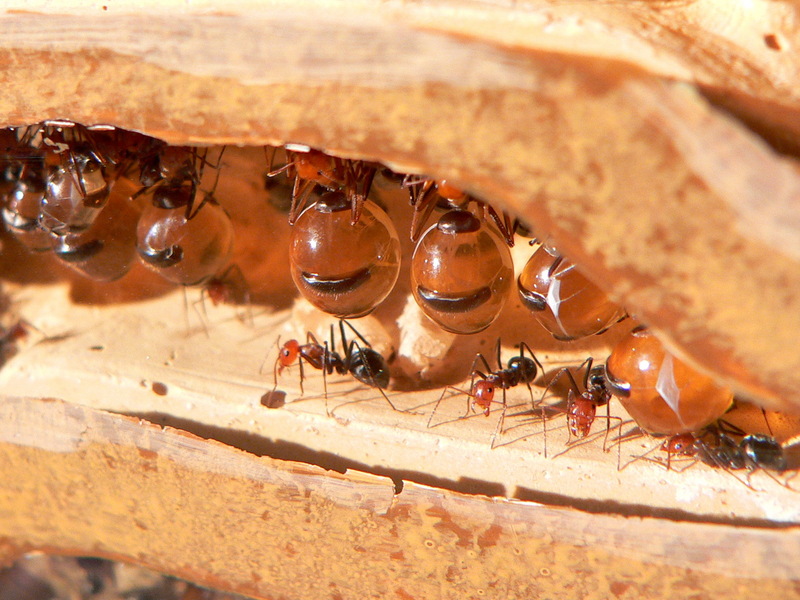|
| Query: Australian insects | Result: 96th of 133 | |
Honeypot Ant - Wiki <!--꿀단지개미-->
| Subject: | Honeypot Ant - Wiki
| |

| Resolution: 1600x1200
File Size: 758061 Bytes
Date: 2006:09:17 11:05:51
Camera: DMC-FZ20 (Panasonic)
F number: f/2.8
Exposure: 10/60 sec
Focal Length: 60/10
Upload Date: 2007:09:04 19:22:04
|
Honeypot ant
From Wikipedia, the free encyclopedia
[Photo] Myrmecocystus ants storing nectar to prevent colony famine. Taken at the Cincinnati Zoo. Taken by Greg Hume (http://en.wikipedia.org/wiki/User:Greg5030) on 9/17/06.
Honeypot ants, also called honey ants, are ants which are gorged with food by workers, to the point that their abdomens swell enormously, a condition called plerergate. Other ants then extract nourishment from them. They function essentially as living larders.
Sometimes raiders from other colonies will attempt to kidnap the resident honeypot ants because of their relatively high nutritional value.
The insects are edible and form an occasional part of the diet of various Australian Aboriginal peoples. Papunya, in Australia's Northern Territory is named after a honeyant creation story, or Dreaming, which belongs to the people there, such as the Warlpiri. The name of Western Desert Art Movement, Papunya Tula, means Honeyant Dreaming.
Several different groups of ants have independently evolved a honeypot lifestyle. The best known are the Myrmecocystus honeypots of western North America and Camponotus inflatus of Australia.
http://en.wikipedia.org/wiki/Honeypot_ant
| The text in this page is based on the copyrighted Wikipedia article shown in above URL. It is used under the GNU Free Documentation License. You may redistribute it, verbatim or modified, providing that you comply with the terms of the GFDL. |
|
^o^
Animal Pictures Archive for smart phones
^o^
|
|

